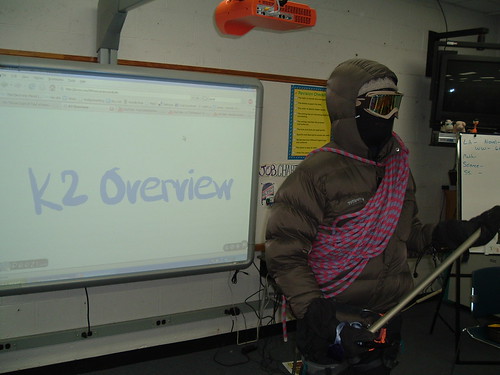Yesterday, my students dove into Glogster — the online virtual poster site — and boy, were they having fun. The night before, they had homework that included reading through a short tutorial of how to use the site. The rest of the homework was writing about Three Cups of Tea, which is the basis for the project that they will begin today in earnest.
I decided to hold back on letting them begin the project so that they could have a chunk of time to just play. I have to keep reminding myself how important this is — this play time with technology is not a waste of time but a valuable space for exploration. Too often, we just have kids jump right in. You know, though, that they are going to explore, so why not give them time to do it?
And the sharing and communication that goes on during these times is quite fascinating. They really do rely on each other as much as me, and what they now know about the site (which is free and allows a teacher to set up a “classroom” of students) will help them with their projects. They are designing a Three Things about Three Cups of Tea poster, with a podcast book review.
The most difficult part of yesterday was making sure they read their Glogster-generated username (called a nickname) and password. Both are a random string of letters and numbers. I had tiny slips of paper with their information to hand out to them (I wonder if I will need to go through all that again today?)
They were clearly frustrated to learn that they could not change their user names and make their glog site their own, but I explained that we in the virtual class could see who they were (they added first name last initial to their profiles and when you are logged into the class, you can see those names — but only if you are a member of the class) but the random user names gave a nice protective shield from the outside world. They understood and it was another lesson in protecting your identity when online.
Here is a glog that a student did, in the 20 minutes they had to work. I know that I will have to keep talking about design with them and repeat my mantra: “just because you can do does not always mean you should do it.”
Peace (on the glog),
Kevin


